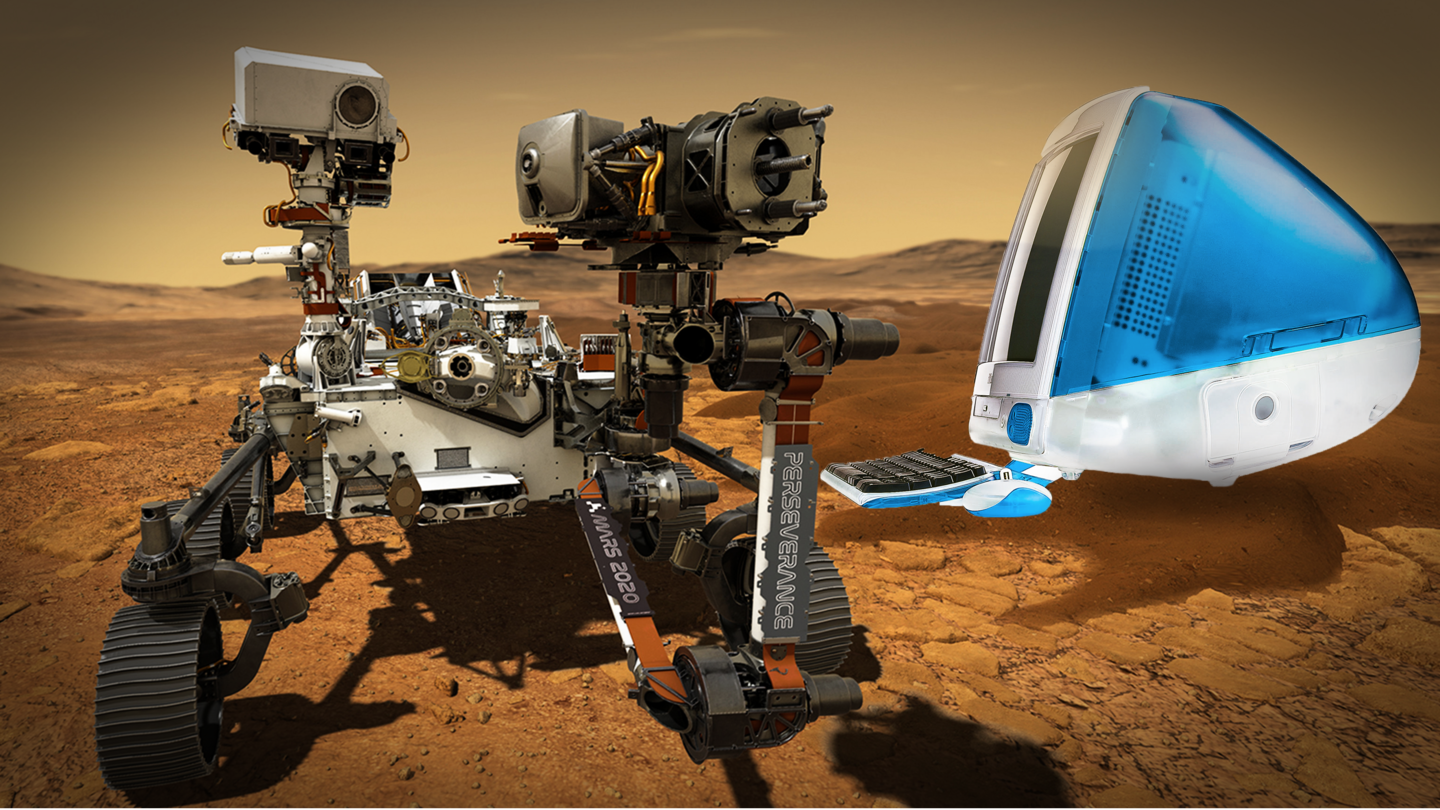
NASA's Perseverance rover powered by processors used in 90s' iMacs
What's the story
NASA's Perseverance rover, which is presently on Mars, is powered by the same IBM PowerPC processor found in the Apple iMacs from 1998. The processor is about 23 years old, and is painfully slow by modern standards.
However, Perseverance's PowerPC 750 processor has been modified for the mission by BAE Systems. The chip has been used for the Curiosity rover as well.
Slow and steady
The single-core PowerPC 750 is clocked at just 233MHz
Apple's iMac G3 was an all-in-one PC bearing a bold design. Its PowerPC 750 chip was designed and manufactured by IBM and Motorola.
The single-core processor was clocked at 233MHz, which is a far cry from today's multi-core consumer processors capable of 4GHz.
But, it was the first processor to feature dynamic branch prediction, which is still used in modern processors.
Information
What is dynamic branch prediction?
Dynamic branch prediction is a computer instruction algorithm that allows the CPU architecture to make an educated guess on what an upcoming instruction could be, so efficiency can be improved. The chip gets better at predicting instructions as it processes more of them.
Ruggedized
The Perseverance rover's processor is radiation-hardened to withstand Martian environment
Coming to the Perseverance rover's processor, it has been manufactured by London-based aerospace company BAE Systems. The processor dubbed RAD750 is a radiation-hardened version of the PowerPC 750 from the iMac.
Mars' atmosphere doesn't block solar radiation. So, a single flash of sunlight could fry ordinary electronics.
The RAD750 can withstand up to 1,000,000 rads of radiation and temperatures between -55 and 125 degrees Celsius.
Data
How many rads cause acute radiation syndrome in humans?
Rad stands for Radiation Absorbed Dose. Exposure to 600 rad causes the gastrointestinal system to collapse, leading to death in two weeks. Exposure greater than 5,000 rad can kill a human in around three days. The RAD750 processor can withstand one million rad.
Tried and tested
NASA chose the processor for its reliability
Understandably, each RAD750 processor costs more than $200,000. James LaRosa from BAE Systems told NewScientist that a charged particle passing through the device can wreak havoc, causing electronic noise and signal spikes within the circuit.
NASA's preference for this processor has little to do with the cost. The older processors are just better suited as they have proven to be reliable.
Popular choice
PowerPC 750 is onboard around 100 active satellites
In fact, in 2014, deputy manager for NASA's Orion spacecraft's avionics, Matt Lemke, had told The Space Review that it's not about the speed as much as the ruggedness and the reliability. He added that it must always work.
The PowerPC 750 processor is also onboard the Curiosity rover and 100 other satellites orbiting the Earth. All of them are operational to this day.